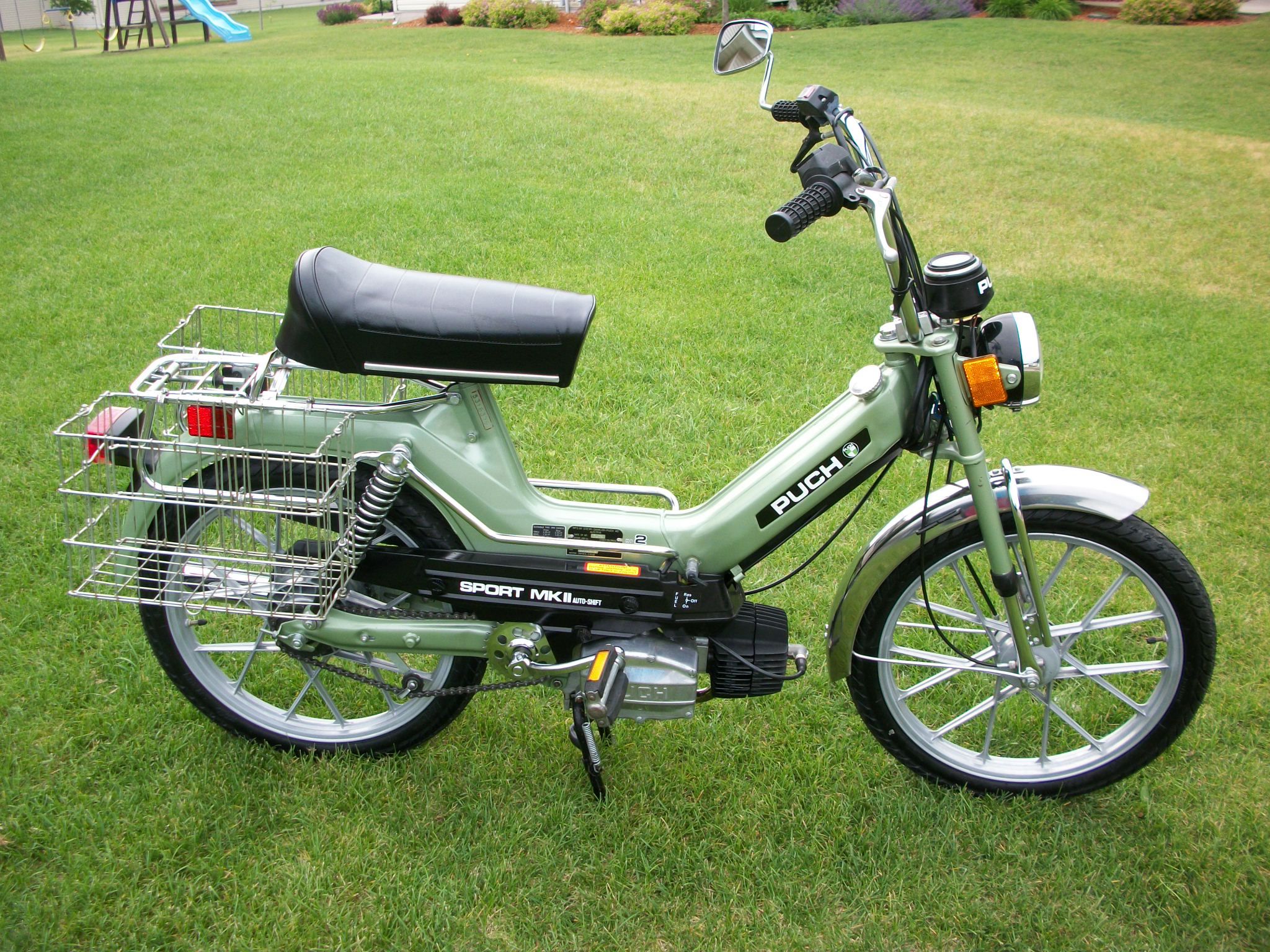The CIXI Heritage Chainless Altitude uses novel energy recovery unit to power a pair of hub motors
Without a chain I wouldn’t call this a bicycle or eMTB anymore. It’s a moped and a pretty slow one.
9 s for 0-25 km/h on an 8% incline? That’s pitifully weak. My muscles are better than that and I’m not a sport freak.Without a chain I wouldn’t call this a bicycle or eMTB anymore. It’s a moped…
But mopeds have chains. 🤔
Not all of them. Some only have a hub motor.
Then it’s literally not a moped. “Moped” is a portmantaux of “motor” and “pedals”. Like this:

This is true in the general, colloquial sense. That said, in some legal jurisdictions such as California, the laws defining a “moped” (the Vehicle Code uses “motorized bicycle” synonymously) were expanded to include a provision where electric mopeds can eschew the pedals. Such CA-legal electric mopeds thus very much resemble a small motorbike, rather than hewing closer to the moped’s bicycle origins.
But that’s the sort of confusion that legislatures will add to their legal definitions, historical accuracy be darned. The policy objective for adding such a provision was to incentivize electric mopeds as zero-tailpipe emission transportation, but this was before ebikes came onto the scene. Still, electric mopeds have their place in California, allowed to use bike lanes alongside bicycles and aren’t subject to insurance laws, but can ride on all roads (except freeways) in any lane like an automobile.
Sure, and motorized bicycles have chains. I just find it very weird that you are saying something is a moped because it’s chainless when most mopeds, and motorized bicycles have chains.
I just find it very weird that you are saying something is a moped because it’s chainless when most mopeds, and motorized bicycles have chains.
It’s the other way around: I am saying that both chain-driven and chainless mopeds validly exist – because different definitions of “moped” exist – so to disqualify something as a moped because it is chainless is not always valid. Kindly do not twist the causality of what I’ve written.
Without a chain… It’s a moped
That’s LITERALLY what you said!
And all I said is it’s weird because most—and I said most—mopeds have chains.
With a peak power of 1,125W and 50Nm of torque, CIXI says the two-wheel drive offers improved acceleration and traction versus a traditional electric bike, accelerating from 0 to 25km/h in 9 seconds on an 8 per cent incline in its two-wheel drive configuration. This compares with 23.6 seconds with a single motor.
compared to 40Nm and 900W with one motor.
The 23.6 second figure is irking me, because it doesn’t jive with the single motor supposedly peaking at 900 W and 40 Nm. Ostensibly the single motor is at the rear, so the suggestion is that the 17 second difference on an 8% grade is made up by tractive power on the front.
But this doesn’t make sense to me, since taking their numbers at face value, the front motor adds 225 W and 10 Nm peak. Supposing that the dual motor config has identically sized motors – and that’s a big if since even 4WD automobiles don’t necessarily use a 50/50 split for front and rear – it must be that either the single motor test bike was skidding badly up the grade, or somehow 225 W can carry 17 seconds of performance.
Neither seems plausible to me. And I’m more likely to believe that they’ve nerfed the single motor model to make the dual motor model compare more favorably.
I guess they only took the front motor
It says it uses the pedals to do energy recovery but I wonder what that means when the battery is dead. Can the pedals provide enough electricity to move the bike without the battery?
Can the petals provide enough electricity to move the bike without the battery?
To me, this is the most important distinction between a true e-bike, and a dirtbike/motorcycle/moped pretending to be an e-bike to skirt regulations.
FWIW, this bike in single motor configuration is nearly 70lbs. LOL
Aside from that, there’s no way that pedaling to generate electricity that drives an electric motor comes even close to the energy output of pedaling to directly generate physical force.
Converting human physical energy into electricity seems like it would only be beneficial for times when that electricity was being stored for later use, or put into a device that is not immediately using that electricity to generate physical force as an output, like a light or a phone.
Downhill could be used for energy recovery in theory - when the gyroscope registers the rider is going down hill it could kick in a low-level regenerative mode that needs to be pedaled through to keep momentum. Would tire the rider out though!
Regenerative braking is not what they are talking about. The cranks on this bike are not physically connected to the wheels. Turning the cranks generates electricity which is used to power the electric motors. This is much less efficient than having the cranks physically turn the wheels.
Ebike motors are roughly 75% efficient, so we’re losing about 25% just on the output. Assuming the same number on input, this bike would produce 56% output for the energy put into it by the rider.
But yes, regenerative braking would be great. I wish my ebike had it.



